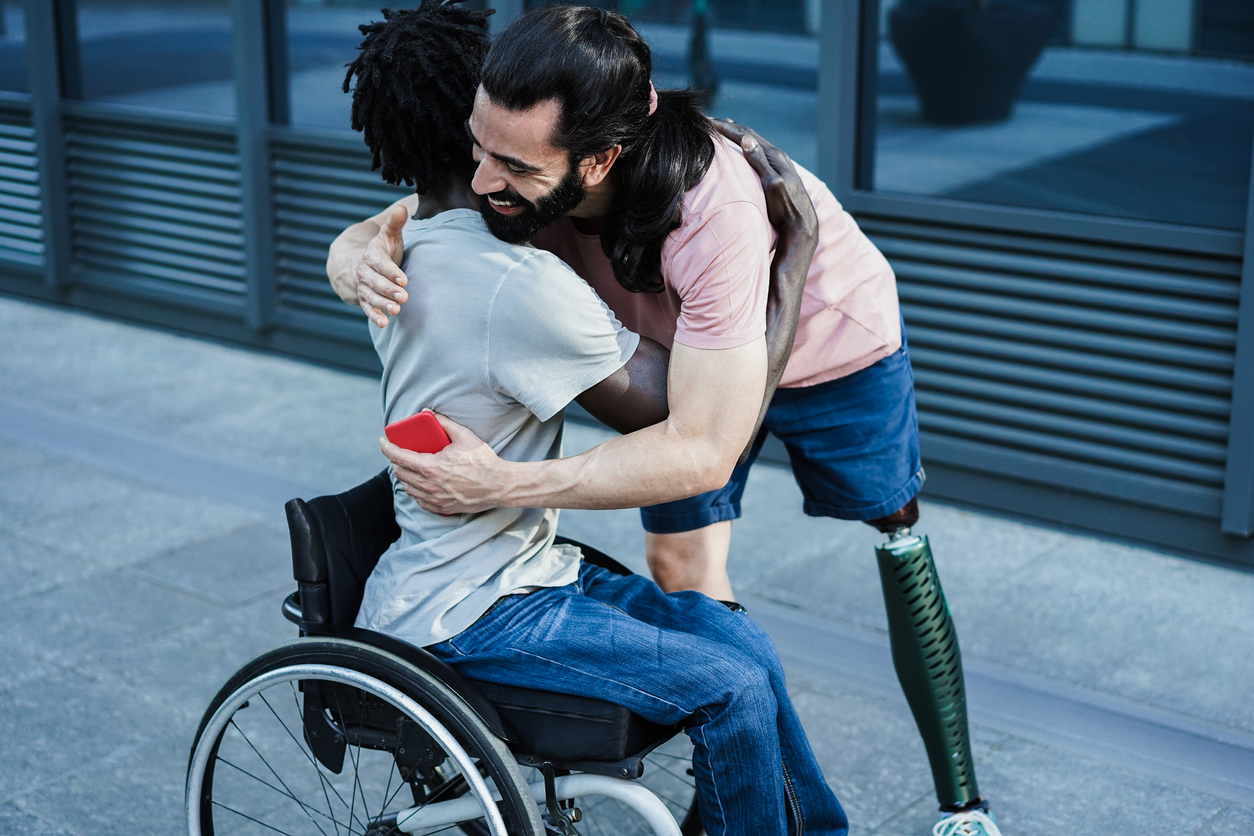Sarah Bolitho asks, how do we encourage people with a disability to access activity and exercise opportunities that will benefit their health, wellbeing and function, and reduce or manage other long-term conditions?
There are an estimated 16 million people in the UK who have a disability; that is around 24% of the population – or nearly one in four. Yet 43% of disabled people are physically inactive compared with only 23% of the non-disabled population. Many disabled people report that they are unable to access physical activity and exercise – not only because of a lack of accessible venues but also because of a lack of qualified fitness instructors.
The Equality Act 2010 states that public authorities, including those who provide exercise and activity services, must consider the needs of those with a protected characteristic, in this case disability, and remove or reduce any potential disadvantages, meet the needs of those people, and encourage people to participate in public life and other activities.
The evidence shows that physical activity in any form is important in promoting health and wellbeing in all populations. However, the level of inactivity in the disabled population, combined with the fact that people with a disability are twice as likely to develop one or more comorbidities, such as cardiac issues and hypertension, obesity, diabetes, asthma, stroke and depression, makes this an area to address to help reduce risk factors for, and manage, existing conditions. It is also worth mentioning that the purple pound is strong (approximately £249 billion annually in the UK), so it makes financial as well as health-related sense to be fully inclusive!
So, how do we encourage people with a disability to access activity and exercise opportunities that will benefit their health, wellbeing and function, and reduce or manage other long-term conditions?
It is simple: we make sure our facilities, venues and services are inclusive as well as accessible! So, what is the difference between being accessible and being inclusive in the context of people with a disability?
Accessibility is defined as “the quality of being easily reached, entered or used by people who have a disability”. This can include reception areas, signage, hearing services, level floors, gym or studio layouts, changing facilities, lifts, etc., as well as having trained staff who can help or advise as required. A simple remit you may think; however, the Activity Alliance has identified accessibility issues within the fitness industry, as only 67 of almost 7,500 facilities in the UK are accredited as accessible. That is fewer than 1% and, while there may be more facilities that are accessible, without the Inclusive Fitness Initiative accreditation, many disabled clients will be unaware of them.
Accessible facilities go further than the layout; it means that equipment needs to be suitable for people with mobility or access issues, such as the side they can transfer from chair to equipment on, or needing to remain in their chair. Those with visual impairments may need verbal instructions and others with a learning disability will need simple instructions or images to follow. If you are in any doubt, ask local disability charities or Activity Alliance to do an access audit with you, as they will have a specific perspective and will highlight things you may not be aware of.
Being accessible also means there are instructors who are qualified and confident in their ability to support customers with diverse needs and that other users are disability aware, and not negative or dismissive. Consider your changing facilities as well: are there private areas for those who want them, is there room for a wheelchair and a carer (if required), and are they clearly signed and accessible?
Inclusivity is part of accessibility but goes further. Being inclusive means that people with a disability are welcomed and included at all levels of a service, from consultation, to employment and participation. Inclusivity means that anyone with a disability can approach any fitness facility or provider confident that not only will the facility be accessible, but there will be someone available who is qualified and competent to support them in their activity needs and desires.
So, it is important you not only have a disability-qualified fitness team – including gym and group exercise instructors – but also that all staff from reception to management are disability aware and educated and can support clients throughout their customer journey. It means providing a range of equipment that can be used by those with impairments or disabilities that limit use of resistance machines or others who need to exercise from their chairs. Resistance bands and tubes, medicine balls, lighter dumbbells and barbells, and stability cushions are easy to provide and store.
It is also worth looking at your team. While nearly a quarter of the population has a disability, only 11.3% of fitness professionals are disabled. Employing instructors with a disability shows you are truly inclusive and, as Sam James from InclusFit, says, “People often seek me out because they have had negative experiences in the past and they know I will understand them, so they feel safe.”
And finally, how inclusive is your marketing? Do you show images of everyday disabled people? In fact, are there any disabled people at all in your promotional materials? If not, then it may be time to rethink how you promote your facility or service and this is where local groups can advise you.
So, your five key action points to be accesible and inclusive, whether you are a large facility, chain or solo business, are:
- Contact local disability groups and get them to conduct an audit of your facility, service and marketing, then act on their findings where practical.
- Provide disability-awareness training for all staff.
- Create marketing materials that reflect a diverse audience, including realistic images of disabled people in your facility (not Paralympians training at an elite facility).
- Ensure you have at least one instructor who is disability qualified at each site or in your business and seek out qualified professionals who are disabled to be part of your team.
- Provide a range of small and portable equipment in the gym and studio areas, and train instructors in how to use these and be able to adapt for a range of different disabilities and impairments.
In summary, let’s start to create a more accessible and inclusive industry and experience for people with a disability or impairment – it makes legal, ethical and financial sense!
Author Bio:

Sarah Bolitho is a Fitness Career Mentor and uses her 30-years industry experience as an instructor, tutor/assessor, IV/EV, and course writer to support new and experienced fitness professionals in developing their careers. She is the author of six books in the ‘Complete Guide to…’ series, has worked for/run, large and small training organisations, written for magazines and been on radio as a leading authority so is ideally placed to support instructors in their career development. Sarah delivers the Active IQ Level 3 Award In Designing Exercise Programmes for Disabled Clients if you would like to learn more www.sarahbolitho.com







